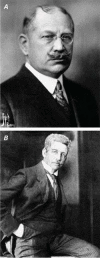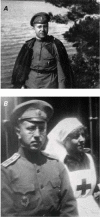Nikolai N. Anichkov and his theory of atherosclerosis
- PMID: 17215962
- PMCID: PMC1764970
Nikolai N. Anichkov and his theory of atherosclerosis
Abstract
Nikolai N. Anichkov (1885-1964) first demonstrated the role of cholesterol in the development of atherosclerosis. His classic experiments in 1913 paved the way to our current understanding of the role of cholesterol in cardiovascular disease. Anichkov's research is often cited among the greatest discoveries of the 20th century; however, little is known about Anichkov and his team. Herein, we give a detailed historical account of Anichkov's work, his personality, his research team, and their pioneering effort.
Figures








References
-
- Friedman M, Friedland GW. Medicine's 10 greatest discoveries. New Haven (CT): Yale University Press; 1998.
-
- Marchand F. Ueber Atherosclerosis. Verhandlungen der Kongresse fuer Innere Medizin. 21 Kongresse, 1904.
-
- Ignatowski AI. Ueber die Wirkung der tierschen Einweisse auf der Aorta. Virchow's Arch Pathol Anat 1909;198:248.
-
- Windaus A. Ueber der Gehalt normaler und atheromatoser Aorten an Cholesterol und Cholesterinester. Zeitschrift Physiol Chemie 1910;67:174.
Publication types
MeSH terms
Substances
Personal name as subject
- Actions
LinkOut - more resources
Full Text Sources
Medical
